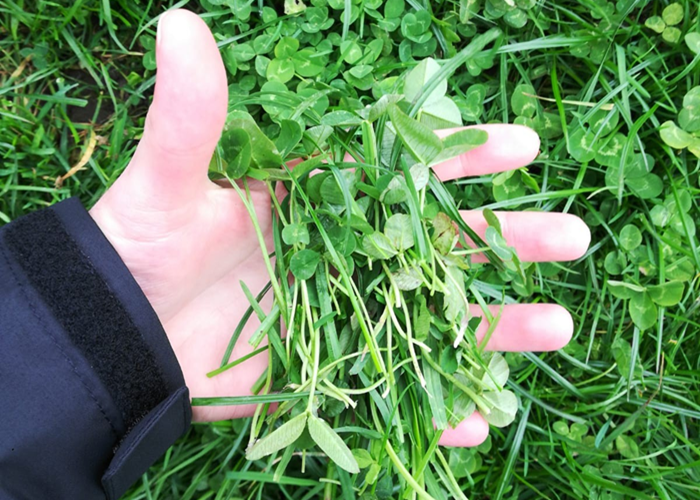Thinking of replacing chemical nitrogen fertiliser this year?

Researchers from Teagasc and the University of Galway have explored farmers’ perceived benefits and issues arising from the adoption of clover and multi-species swards, Teagasc Walsh Scholar, Felipe Aguiar-Noury shares some of the study’s key findings.
Chemical nitrogen (N) fertilisers have reached historic peak prices in recent years. It is no surprise that many farmers have started to transition to other fertiliser alternatives, such as protected urea and the introduction of new forage species into grassland.
The latter has gained particular attention in the form of grass-clover swards and multi-species swards. For example, some scientific experiments have achieved a substantial reduction in chemical nitrogen fertiliser by 100-200 kg N/ha when establishing grass-clover swards. This implies a considerable reduction in production costs, not to mention the enormous benefit to the environment these practices attain (lower emissions, lower leaching and lower contamination of water sources, etc.).
However, replicating the results of experimental farms on real farms can be challenging, and potential issues of adoption are often overlooked. What do farmers think about grass-clover swards and multi-species swards? Do farmers think they work, or do they have issues?
Elements influencing adoption
Researchers from Teagasc and the University of Galway have explored farmers’ perceived benefits and issues arising from the adoption of clover and multi-species swards. Their study, recently published in Agricultural Systems, has discovered that these perceived benefits and issues are significant elements influencing adoption decisions.
For example, most farmers agree that grass-clover swards can reduce chemical N fertilisers, increase farm income, reduce the carbon footprint of the farm, and even improve the aesthetic of the farm. Higher expected benefits from grass-clover swards are found to be significantly associated with higher adoption rates. However, most farmers also consider that clover entails considerable bloat risks. Bloat is an animal health condition associated with high clover content and management practices, which impedes normal gas release, and can be fatal for ruminants. This research shows that higher perceptions of bloat risks constrain adoption decisions. In addition, difficult establishment, management, and the learning processes that adoption requires also hinder farmers from choosing clover.
Researchers highlight the importance of policymakers to help increase trust in the benefits of clover and multi-species swards by addressing the difficulties farmers could face when adopting them. In the end, their adoption represents a win-win strategy for both farmers and policymakers.
